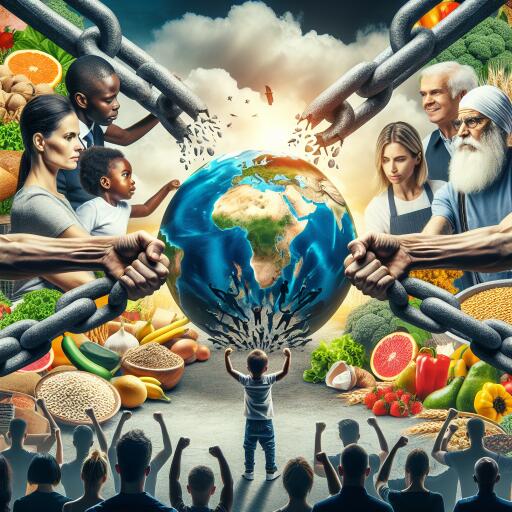Striving to Break the Global Grip of Malnutrition
In an alarming statistic from last year, over 36 million children under the age of five were reported to be suffering from acute malnutrition across the globe. The mere notion that children continue to suffer from malnutrition in an age of abundance is deeply unsettling. Factors such as natural disasters, poverty, and conflict have perpetuated this crisis, placing the youngest and most defenseless in jeopardy. From the emergency status of child malnutrition in Sudan as flagged by the World Health Organization, to the distressing figures from northern Gaza where up to a quarter of children are malnourished, the scale of the challenge is immense. Moreover, countries such as Afghanistan, Haiti, Nigeria, and Yemen are grappling with similar afflictions among their young populations.
However, the path to recovery for malnourished children involves more than the mere provision of food. These children are significantly more susceptible to illness and death even post-treatment. For those who survive, a heightened risk of various health complications looms over their future. Scientists are now delving deeper to understand the profound impacts malnutrition inflicts upon the body and searching for effective recovery methods. Recent studies have illuminated that prolonged malnutrition not only weakens the immune system but also inflicts tissue and organ damage which, in turn, hampers nutrient absorption. Innovations in therapeutic food designed to fortify the gut microbiome, along with medications targeted at repairing the gut lining, hold promise. Nonetheless, the pursuit of these solutions is fraught with urgency given the lives hanging in the balance.
Turning to a different but equally stubborn issue, the story of conservation biologist Ximena Velez-Liendo sheds light on a heartening triumph over adversity. Dedicated to preserving Bolivia’s Andean bears from the brink of extinction, Velez-Liendo has pioneered a community-centric approach to conservation. Faced with threats from habitat loss and human conflicts, she engaged local communities in sustainable livelihood alternatives like beekeeping. This not only mitigated the need for deforestation but also paved the way for peaceful human-bear coexistence, demonstrating a significant paradigm shift in conservation efforts—from the exclusive purview of biologists to a collective community endeavor.
In another exploration, the realm of artificial intelligence (AI) and its cognitive capacities come under scrutiny. Generative AI chatbots, such as ChatGPT, have astounded the masses with capabilities ranging from coding to aiding in educational assignments. Amidst these advances, ambitious claims of AI possessing the ability to think and reason have emerged. The complexity of truly assessing machine intelligence is underscored by revisiting Alan Turing’s 1950 imitation game. Turing’s benchmark for machine intelligence—a computer’s ability to converse indistinguishably from a human—remains a contested achievement. While today’s AI may excel in specific tasks through extensive training, discerning whether this constitutes genuine intellect or merely a sophisticated mimicry of learned information continues to challenge researchers. Efforts to refine testing methodologies for clearer insights into AI cognition are ongoing.
As we delve into these diverse yet interconnected narratives in our summer double issue, our coverage broadens to include more articles that we hope will enrich your understanding and keep you engaged until our next issue arrives. The battle against malnutrition, the strides in conservation efforts, and the quest to unravel AI’s cognitive abilities, each in their own way, underscore the complexity and interconnectedness of the challenges we face, along with the ingenuity and perseverance required to address them.









